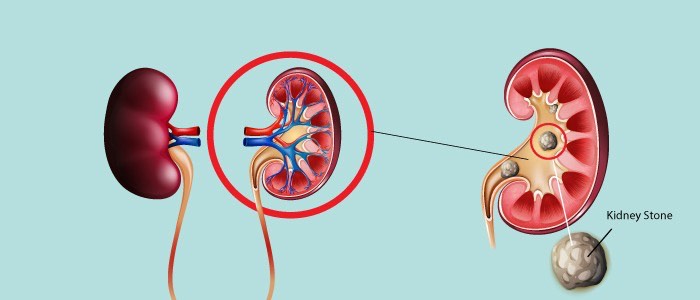Signs That You Might Be Living With Kidney Stones

Kidney stones are as small as a grain of sand, but they pack a powerful punch. You feel completely fine one minute and the next thing you know, you’re doubled over in agony, desperately trying to find the strength to get to the ER.
The ureteropelvic junction is a kind of funnel where urine exits the kidney. An obstruction occurs when a stone exits the kidney and becomes lodged in the funnel or the ureter, the tube that connects the kidney to the bladder.
Kidney stone pain is not always severe or obvious.
The kidneys are located in the flank region of the torso. They are located in the back, just below the lower ribcage. While intense pain can be felt on either side of the back (depending on which kidney the stone is in), this is not always the case.
You may feel abdominal pain or groin discomfort. It may begin higher up near the kidneys and progress to the groin. Your pain may be intense but brief. It could also be vague, like a stomach ache that won’t go away.
Non-obstructive kidney stones can occasionally cause pain or discomfort. Acute pain occurs when there is an obstruction, which means they are either blocking the kidney or passing through it. Kidney stone pain is typically sporadic. There may be periods of intense pain followed by periods of no pain. It appears and disappears.
Everyone reacts to pain differently and has different pain thresholds. So understanding what’s going on with your body based solely on pain can be difficult.
You might feel fine once the pain subsides, only to have it return just as suddenly. Because you haven’t passed the kidney stone completely until you see it.
Other signs of kidney stones may be more visible:
Not all kidney stones cause discomfort. Some people have no symptoms at all. When symptoms do appear, they are clear indications that something is wrong and that you should see a doctor:
- Vomiting & Nausea
Kidney stones can cause nausea and vomiting. But not in the way you might expect from stomach flu or food poisoning. The pain can be so excruciating that it causes nausea or even vomiting.
If the pain is from your right side, these symptoms may lead you to believe that your appendix has burst, which is another reason to seek medical attention.
- Urine With Blood
It’s frightening to see your Urine turn pink or red. However, it only takes a small amount of blood to change the color of urine. Some medicines and red foods, such as beetroot, can have this effect, but you should have it checked regardless. Blood in the urine could be caused by a kidney stone or a variety of other issues, some of which are serious, such as kidney, bladder, or prostate cancer.
- Your urine smells foul
Urine can also change in other ways. Kidney stones form when concentrated minerals in your urine crystallise. Concentrated urine is generally darker and stinkier, just like dehydrated urine. The strong odour is frequently compared to ammonia, but it is more likely that the odour is caused by a urinary tract infection rather than a kidney stone.
- Issues with Flow
A kidney stone obstruction causes more than just pain. It can cause a variety of urine issues. As the stone moves further down the urinary tract, closer to the bladder, you may feel a greater need to pee more frequently and experience pain when you do. Kidney stones can even be on both sides at the same time and completely stop the flow of urine, which, while uncommon, is a medical emergency.
- High fever and chills
When people have kidney stones, they may experience flu-like symptoms. That’s a bigger issue than a simple stone. If you have a fever, chills, or shivering, you may have an infection in your kidneys or urinary tract. You should seek immediate medical attention.
The symptoms and risk of kidney stones differ between men and women:
Men are twice as likely as women to develop kidney stones. However, the disparity has been closing in recent years. It’s unclear what causes kidney stones or how common they are in men and women.
Both sexes are heavily influenced by genetics. Men with a family history of kidney stones are two to three times more likely to develop them. Other risk factors are related to the conditions that contribute to stone formation, such as diet, dehydration, hot weather (which also causes dehydration), and medication side effects.
Dehydration is the most dangerous risk factor. People who work on-field frequently develop kidney stones as a result of chronic dehydration. They should drink more water because they are losing fluid in numerous ways.
Differences in male and female anatomy can also result in different symptoms. For men, as the stone passes through the narrow ureter and beyond, they experience pain in their abdomen, lower back, or groyne. This can also result in gastric discomfort, which is centered in the upper abdomen and can be dull and achy or throbbing in nature. Women, on the other hand, may draw parallels between kidney stones and menstrual cramps, which can range from dull aches to wincing pain.
Kidney stone pain is typically episodic. But you don’t have to wait for it to pass or for other signs to appear before you can see if you have a stone. You should seek medical attention if you are in severe pain. Because you never know whether it will pass or how long it will take.
Consult a doctor if you have pain with or without changes in your urine, nausea or vomiting, and especially fevers and chills.
